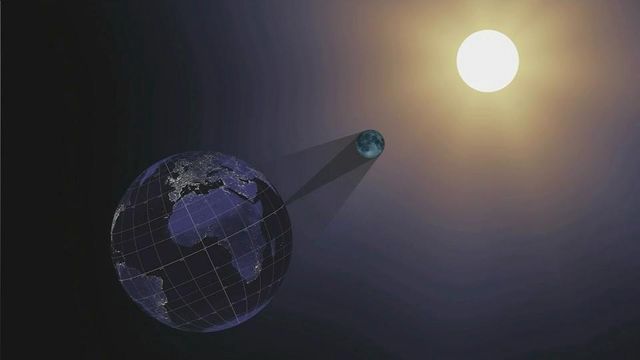Total solar eclipse will be viewable online and in the air
The only total solar eclipse of 2016 occurs on March 9-8. This odd schedule happens because the moon's shadow moves from west to east beginning March 9 in the Indian Ocean southeast of Sri Lanka, passes over Indonesia, over the International Date Line into the South Pacific and ends north of the Hawaiian Islands on March 8.
Posted — UpdatedThe only total solar eclipse of 2016 occurs on March 9-8. This odd schedule happens because the moon’s shadow moves from west to east beginning March 9 in the Indian Ocean southeast of Sri Lanka, passes over Indonesia, over the International Date Line into the South Pacific and ends north of the Hawaiian Islands on March 8.
Solar eclipses, especially total ones, are more than a curiosity. Each provides a unique opportunity to study the sun's atmosphere, the corona, and how it drives explosive clouds of solar material called coronal mass ejections. This space weather can disrupt satellites and radio communications near Earth as well as impact astronauts aboard the International Space Station. We study the sun’s corona using a device called a coronagraph, which helps block the light of the sun itself, but the best chronograph is the moon passing in front of the sun.
Viewing this eclipse in person wont be easy for scientists or eclipse fans. Only a small portion of the path of totality crosses over any land. Most of that land, two dozen Indonesian islands ranging from Sumatra’s 50-plus million inhabitants to tiny uninhabited islands along the path, is embroiled in political turmoil.
The airline brought together dispatch, pilots, and maintenance personnel along with air traffic control to help ensure the plane will be in the right place at the right time. You can follow the progress of Alaska Air flight 870 once it takes off at 6 p.m. Eastern. Totality will be visible to passengers beginning at 10:35 pm Eastern for four minutes.
Flight 870 passengers, from their position above the clouds, may be the only ones to see the eclipse. It is monsoon season in Indonesia and Micronesia.
We will get our chance closer to home when a total eclipse passes across the United States from Oregon to South Carolina on Aug. 21, 2017, including a small portion of extreme western North Carolina. Miss that one and you’ll need to mark your calendars for March 30, 2052, to see another total eclipse from US soil.
• Credits
Copyright 2024 by Capitol Broadcasting Company. All rights reserved. This material may not be published, broadcast, rewritten or redistributed.





